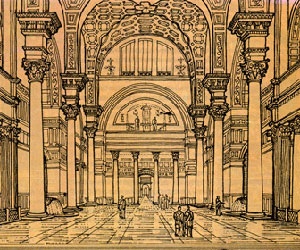 |
|
|||
|
| ||||
Roman Baths (Therms)
The Roman Baths are a history of about 25 years B.C. At that date the baths were built near the hot thermal springs, from which they borrowed their name - terms. At the initial stage of the existence of terms, they performed extremely hygienic function, simply put - they washed off the dirt. However, since the first years of AD, in Rome, the terms become more widespread applicability. Roman baths gradually become a place of cultural recreation and leisure. Citizens attended almost every day terms. Someone decided there business issues, someone wrote the music and then played it, and another found just interesting conversation in the baths. As early as the fifth century AD, the terms have become so popular that there were about a thousand only in Rome. Roman Baths consisted of several rooms, each of them was its destiny. Palestra. An ancient analogue of the modern gym. The Romans were engaged in physical exercises for stretch and warm up muscles before the bath in the palaestra. Apoditery. This is a kind of dressing room with shelves and benches for the convenience of visitors. Tepidarium. Romans bathed and washed in Tepidarium. Washing consisted of rubbing the body with oil and its subsequent purification metal scrapers. Also massage was made in this room. Caldarium. This is a large room equipped with non deep swimming-pools of hot water which is heated by the furnace, below the north of the caldarium. Accordingly, the water creates steam for the caldarium. For those who prefer dry steam was provided a special room without swimming-pools, which was called - Laconia. By the way, it is believed that the word "laconic" is gone on the name of this building. That is dry and without water. Romans visited frigidarium in conclusion the procedure sweating, room with a cool swimming-pool, where you can relax, eat and even sleep. | |||||||
|
|||||||